| RehAnkle
SMART WEARABLE ROBOT FOR JOINT ANKLE REHABILITATION Dates: From 2022-09-01 to 2023-05-15 Lab: Human Locomotion Laboratory This project aims to create a new Smart robot system for lower-limb (joint ankle) neural rehabilitation, including its testing by involving medical end-users (a hospital with their patients and therapists). The solution will consider an innovative structure of robotic exoskeleton based on rigid actuators adapted to the joint ankle, an electronic control system and a user interface inspired by gamification and biofeedback strategies. The solution will have real-time communication with the movements of the patient, incorporating rehabilitation exercises that allow adapting the exoskeleton behavior automatically, achieving personalized therapies. Principal Investigator:Juan C. Moreno Funded by: DIH-HERO Technology Demonstrator Open Call 2022. Financial Support to Third Parties Technology Demonstrator 2022 |
| Tailor
Novel modular wearable robot and neuroprosthetic devices for personalized robotic-assisted walking treatments Dates: From 2019-01-01 to 2022-06-30 Lab: Human Locomotion Laboratory TAILOR approach will lead to a paradigm shift in the design and prescription of assistive gait-training WR and NP for neurologically impaired people, impacting on: 1) Basic and clinical research on motor control and human-in-the-loop controllers, taking advantage of isolated robotic joints in a single (WR or NP) or hybrid configuration. 2) Patient-specific neuromusculoskeletal models will improve clinical and basic research on motor disorders, functional assessment, and virtual-human-in-the-loop design and control of WR-NP technology, optimizing resources. Furthermore, clinical applications of these models are envisioned, providing a more realistic representation of what-if clinical questions (i.e., effects of botulin toxin, or prescription of assistive devices for walking compensation). 3) User needs and expectations will provide new insights on what is actually wished by the user regarding WR-NP technology, matching expectancies and technology performance. This information will impact on the development of future WR-NP technology, as well as on the services provided with it: rehabilitation treatments, devices for personal use, etc. Quality of life of people with walking impairments will be improved. Delivering affordable and personalized WR, NP and HR technologies will impact on user acceptance, enabling ambulation and providing therefore functional, social (inclusion, participation) and clinical (bladder and bowel, cardiorespiratory) benefits. Furthermore, people that are not suitable for current WR technology, but that have walking impairments that need the use of a wheelchair, will benefit from the TAILOR modular devices, enabling rehabilitation and functional compensation of walking with WR, NP and HR technology. In general, TAILOR will spread the use of this technology, boosting the industry of advanced technologies for walking assistance with significant healthcare savings both at individual and societal levels. Principal Investigator: Juan C. Moreno Funded by Ministerio de Ciencia, Investigación y Universidades con Ref. RTI2018-097290-B-C32 |
 |
EXTEND
Bidirectional Hyper-Connected Neural System Dates: From 2018-01-01 to 2022-06-30 Lab: Neural Interfaces and Enhancement Lab, Human Locomotion Laboratory, Neuromuscular Coordination Laboratory Current brain and neural interfacing technologies still face significant limitations to become accessibility tools that can benefit people. On the one hand, non-invasive neural interface technology (e.g. EEG, EMG) is intrinsically unidirectional and of limited capacity. On the other hand, invasive technology (e.g. percutaneous EMG, implanted nerve electrodes or intracranial electroencephalography) while allowing two-directionality and better performance still relies on complex surgical procedures. EXTEND aims at developing the novel concept of Bidirectional Hyper-Connected Neural Systems (BHNS) to extend the capabilities of neural interfaces with minimally invasive communication links between multiple nerves in the body and multiple external devices. EXTEND will realise BHNS by developing disruptive wireless neuromuscular (injectable) interface technology that enables distributed stimulation, sensing, processing and analysis of neuromuscular activity, the ultimate stance of the neural code of movement. The EXTEND project will showcase the advantages of this new technology in two applications: (1) tremor management in essential tremor (ET) and Parkinson disease (PD), and (2) neural interfaced assistive wearable robots for spinal cord injury (SCI). EXTEND will also work towards a community hub that brings together stakeholders to create an innovation ecosystem that can nurture the fast development of neural interfaces around the new concept. Principal Investigator: Filipe Barroso Funded by H2020 Topic ICT 23-2017: Interfaces for accessibility. Reference: 779982 |
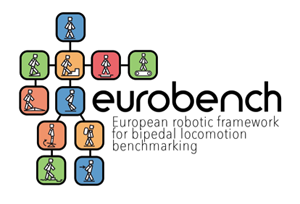 |
EUROBENCH
EUropean ROBotic framework for bipedal locomotion bENCHmarking Dates: From 2018-01-01 to 2022-06-30 Lab: Human Locomotion Laboratory, Neuromuscular Coordination Laboratory The EUROBENCH project aims at creating the first benchmarking framework for robotic systems in Europe. The framework will allow companies and researchers to test the performance of robots at any stage of development. The project will primarily focus on bipedal machines, i.e. exoskeletons, prosthetics and humanoids, but will be designed to be easily extended to other robotic domains. The EUROBENCH framework will be composed of: – A methodological component, which will include methods and metrics to calculate the System Ability Levels of a robotic system. These methods will be integrated in a professional software tool to permit its wide use across domains and laboratory conditions. The main goal of this unified software is to facilitate the use of benchmarking methodology at all levels from research to pre-commercial prototyping. – An experimental component, which will concentrate the state-of-the-art test benches in two facilities, one for wearable robots (including exoskeletons and prostheses), and one for humanoid robots. These facilities will allow companies and researchers to perform standardized tests on advanced robotic prototypes in a unique location, saving resources and time, and preparing for certification processes. Principal Investigator: Diego Torricelli Funded by H2020 Topic ICT 27-2017: System abilities, SME & benchmarking actions, safety certification. Reference: 779963 |
| REGAIN
Regain of arm and hand movements in cervical spinal cord injury patients by means of spinal electrical neuromodulation assisted with an arm exoskeleton. Dates: From 2018-10-23 to 2022-01-31 Lab: Human Locomotion Laboratory We will develop a bottom to top approach employing animal models and human testing to determine whether or not non-invasive neuro-modulation of the cervical spinal cord concomitant with upper limb rehabilitation driven by exo-skeletons can facilitate the regain of the arm and hand functional movements in spinal cord injured patients. We hypothesize that that spinal electrical neuro-modulation together with sensory-motor rehabilitation will facilitate the transmission and processing of the motor commands along the residual brain-to-spinal connectome leading to the regain of arm and hand movements. The proposal follows a multi-disciplinary and translational approach; including basic scientists, engineers and clinicians, and is divided in 3 independent but related working packages (WP). WP1: Develop of a selfcontained hybrid robotic system to drive arm and hand movements rehabilitation in spinal cord injured patients. WP2: Implement the exo-skeleton to rehabilitate arm and hand movements concomitant to cervical electrical neuro-modulation in cervical spinal cord inured patients. WP3: In an animal model, using the optimal spinal stimulation parameters, identify the cellular and molecular changes in the brain-to-spinal connectome, which mediates recovery. The results will support the development of the first feasible treatment to improve manual dexterity in cervical spinal cord inured patients, and will present a comprehensive and detailed analysis of the mechanisms underlying the recovery, providing an indispensable guideline for the application of stimulation-based therapy to SCI patients. KEYWORDS: Spinal cord injury / plasticity / neuro-modulation / hand function / neurorehabilitation/ exo-skeleton /spinal networks Principal Investigator: Juan C. Moreno Funded by: Fundación La Marató de TV3 |
| SALOEXO
Assessing SAfe LOcomotion with EXOskeletons in realistic scenarios Dates: From 2020-11-15 to 2021-10-15 Lab: Neuromuscular Coordination Laboratory Exoskeletons are experiencing an exponential growth due to their increasing technical readiness and demand across a wide range of application domains, such as industry, personal care and rehabilitation. Exoskeletons, by definition, have an intrinsic physical connection with the human user, which poses very demanding safety requirements. To be widely accepted and adopted by society, exoskeletons should demonstrate their safe operation under a wide variety of real environmental conditions. eg. moving in an unstructured environment, reacting to external perturbations, etc. Nevertheless, such conditions are not considered by the current international guidelines on safety (ISO 13482, IEC 80601-2-78, ISO 14971), whose tests are either very generic or limited to static or quasistatic conditions. The availability of tools to measure safety of interaction in realistic operating conditions represents an urgent need in the robotics community. A set of ad-hoc quantitative indicators would be of invaluable help to monitor, demonstrate and predict the safety of an exoskeleton, before and after its introduction in the market. To address this need, the project SALOEXO will: (1) develop a set of safety indicators able to quantify the level of safety of lower limb exoskeletons in realistic scenarios and (2) identify a minimal set of sensors able to obtain such measures during real operating conditions. This approach will enable any company, researcher or end-user to collect safety-related data in the field, with real users, and establish quantitative correlation between recorded data and hazardous events. The availability of such data will in turn permit to: (1) improve the accuracy and credibility of risk assessment procedures, (2) implement online monitoring tools to avoid hazardous events, and (3) plan more concrete mitigation strategies for unavoidable hazards. Principal Investigator: Diego Torricelli Funded by COVR – Award Agreement – Realistic Trial ID no. RRD7218.03.01 | Call 3 |
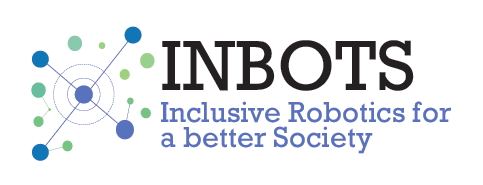 |
INBOTS
Inclusive Robotics for a better society Dates: From 2018-01-01 to 2021-06-30 Lab: Human Locomotion Laboratory, Neuromuscular Coordination Laboratory The main challenge that INBOTS wants to overcomes is the lack of a clear understanding and communication between all the involved stakeholders. These limitations hinder current efforts to successfully discuss and agree on the many important technical and non-technical aspects in the field. Therefore, with the purpose of optimizing the outcomes of the coordinate and support action, INBOTS will focus mainly on Interactive Robots, which we define as any robot that is interacting in close proximity with humans. In this context, the overall objective of this project is to create a community hub that can bring together experts to debate and create a responsible research and innovation paradigm for robotics. To this end, INBOTS provides a platform to establish a working synergy between four pillars that covers all stakeholders in Interactive Robotics: the technical expertise pillar, the business expertise pillar, the ethical, legal and socioeconomic expertise pillar, as well as the end-users, policy makers and general public pillar. Therefore, the project strives at coordinating and supporting actions aimed at building bridges among these pillars to promote debate and create a responsible research and innovation paradigm that will potentiate EU leadership on robotics. Principal Investigator:Juan C. Moreno Funded by H2020 Topic ICT 28-2017: Robotics Competitions, coordination and support. Reference: 780073 |
| EXOSAFE
A mechatronic leg replica to benchmark human-exoskeleton interaction, funded by COVR project (Being safe around collaborative and versatile robots in shared spaces). Dates: From 2020-04-16 to 2021-01-16 Lab: Wearable robotic exoskeletons are collaborative robots (cobots) designed to be worn by humans to support or augment their motor abilities. They are characterized by the intrinsic physical interaction with humans, which is one of the major determinants for safety. Exoskeletons must be carefully designed to ensure anatomical biocompatibility and minimize hazardous interaction dynamics with human limbs, e.g. shear forces. In the field of benchmarking and standardization (e.g. ISO TC299, ASTM F48), increasing relevance have been given to testing exoskeleton performance. Yet, very few efforts have focused on quantifying physical interaction. This is likely due to the lack of mature experimental methodologies and physical test benches. To fill this gap, EXOSAFE will develop a robotic human-like leg able to replicate human joint dynamics and measure the interaction forces with an external exoskeleton. The project will also produce a set of benchmarking protocols and safety-related performance indicators in compliance with the protocols and procedures of the COVR Toolkit. This integration between robotic hardware and benchmarking software is expected to contribute to facilitate the R&D of safer exoskeletal systems, and enable an easier, faster and reliable CE-marking process. Principal Investigator: Diego Torricelli. Funded by H2020-ICT-2017-1. ICT-27-2017 – System abilities, SME & benchmarking actions, safety certification |
| RECODE
Motor rehabilitation of spinal cord injury by combined application of robotic exoskeleton, spinal cord stimulation and cortical modulation Dates: From 2018-11-01 to 2020-10-31 Lab: Human Locomotion Laboratory The project will validate technically, functionally and clinically the concept of hybrid neuroprosthetic-robotic intervention in combination with non-invasive brain stimulation for the rehabilitation of gait in patients with spinal cord injuries. In RECODE: – Techniques of selective stimulation of functionally relevant areas and spinal networks directly involved in spinal excitability associated with muscle induced recruitment will be studied. – Through the characterization of brain and spinal responses in the motor neuron firing properties and the effect of these changes on the excitability of the cortico-spinal tract, there will be a synergistic treatment of three therapeutic interventions for neuromotor recovery of gait function. – The proposed intervention, using a model based on the neuromuscular and mechanical response, will determine whether the controlled combination of spinal and cerebral stimulation in synergy with a robotic exoskeleton is beneficial for the motor recovery of the lower extremities. The project research team brings together complementary research groups in neuroengineering and medicine, which have achieved significant scientific and technological advances in recent years in the areas involved in the RECODE concept: pathophysiology of spinal cord injury; neuroprosthetics and robotic therapeutic exoskeletons; non-invasive spinal electrostimulation and transcranial neuromodulation. KEYWORDS: Spinal cord injury, spinal neuroprostheses, brain stimulation, robotic exoskeletons, neurorehabilitation. Principal Investigator: Juan C. Moreno. Funded by Ministerio de Ciencia, Programa Explora Ciencia y TecnologíÃa 2017, Ref. Entidad Financiadora: DPI2017-91117-EXP. Código Proyecto: 184576 |
| MOCAP4ROS
Motion Capture Systems in ROS2, funded by ROSIN project (ROS – Industrial Quality – Assured Robot Software Components) Dates: From 2019-11-01 to 2020-07-31 Lab: The main goal of MOCAP4ROS2 project is to standardize motion capture (MOCAP) systems in the ROS community, as well as provide an implementation as ROS2 packages of messages, formats, tools, and nodes. MOCAP4ROS will introduce a discussion in the ROS community of formats and messages to be implemented by any developer of MOCAP systems for ROS/ROS2. This project will provide support for Optitrack, for MOCAP systems based on vision, and Technaid sensors, for MOCAP systems based on motion sensors. As a use case, we will test our implementation in exoskeletons and human tracking, measuring accuracy and real-time characteristics. Principal Investigator: Diego Torricelli. Funded by H2020-ICT-2016-1. ICT-26-2016 – System abilities, development and pilot installations |
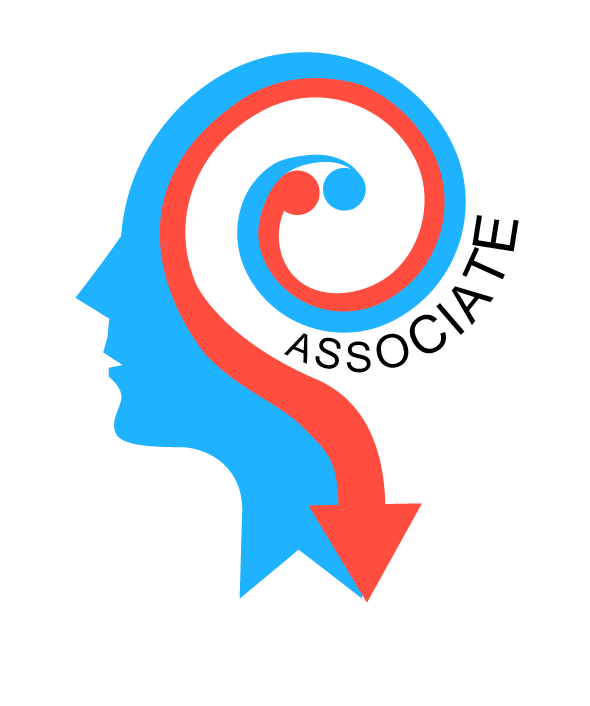 |
Associate
A comprehensive and wearable robotics based approach to the rehabilitation and assistance to people with stroke and spinal cord injury Dates: From 2015-01-01 to 2019-12-31 Lab: Neuromodulation and Assessment Lab The first objective of the project is to validate the effectiveness of a novel intervention to promote motor control re-learning in neurological patients by means of an associated use of motor planning at brain level, sensory stimulation at cortical level and afferent feedback provided with a wearable lower extremity exoskeleton. The second objective of the project is to validate the effectiveness of a novel lower extremity wearable exoskeleton with embodied intelligence and enhanced self-learning characteristics in the assistance to locomotion in complete and incomplete SCI in terms of reduced learning periods, improved adaptation and more versatile and dextrous operation. Funded by the Spanish Ministry of Economy and Competitiveness under Agreement: DPI2014-58431-C4-1-R |
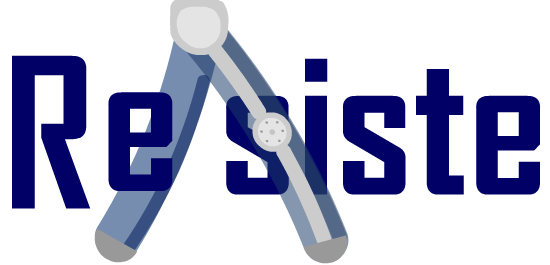 |
REASISTE
Red Iberoamericana de Rehabilitación y Asistencia de Pacientes con Daño Neurológico mediante Exoesqueletos Robóticos de Bajo Coste Dates: From 2016-01-01 to 2019-12-31 Lab: Human Locomotion Laboratory, Neuromuscular Coordination Laboratory Los pacientes con daño neurológico son un colectivo muy desfavorecido en Iberoamérica al que no se ha dedicado hasta la fecha un esfuerzo coordinado transnacional y multidisciplinar de centros clínicos, centros de investigación, universidades y empresas. El daño neurológico es una de las principales causas de discapacidad, siendo el número de personas con discapacidad en Iberoamericana superior a los 72 millones (afectando aproximadamente al 11% de la población total de Iberoamérica). El objetivo general de esta red temática es establecer un amplio foro de trabajo para posibilitar y facilitar la cooperación y el intercambio de conocimiento entre actores implicados de Iberoamérica que trabajan en el campo de la rehabilitación y asistencia de pacientes con daño neurológico. La red se articula en torno al desarrollo de uno o varios exoesqueletos robóticos (ERs) para mejorar la rehabilitación y asistencia de pacientes con daño neurológico. De este modo, una vez finalizada la red, se dispondrá de varios ERs que podrán ser utilizados por centros clínicos en terapias de rehabilitación y de asistencia a pacientes con daño neurológico. Si bien las personas que se beneficiarán en primer lugar de los desarrollos de esta red son el colectivo de pacientes con daño neurológico, los ERs de la red podrán ser empleados para mejorar la salud de pacientes con otras patologías, como por ejemplo, pacientes con poliomelitis o botulismo. Funded by Programa Iberoamericano de Ciencia y Tecnología para el Desarrollo (CYTED). Reference: 216RT0504 |
| SMARTWEARABLE
SMART WEARABLE ROBOT SYSTEM FOR LOWER-LIMB NEURAL REHABILITATION (SmartWearable). Experiment from the “Digital Innovation Hubs boosting European Microelectronics Industry – DIATOMIC” Dates: From 2018-10-01 to 2019-11-30 Lab: Human Locomotion Laboratory The main goal of the experiment is to develop a smart reduced exoskeleton to improve the accuracy, robustness and safety in the rehabilitation process for small joints of lower limbs. The solution will be based on a new structure of exoskeleton based on rigid actuators adapted to the joints (knee and ankle), an electronic control and monitoring system, and an user interface in the form of a video game, directly communicated with the movements of the user to incorporate rehabilitation exercises and to regulate automatically exoskeleton behaviour in order to obtain personalized therapies. Specific objectives are: – To integrate advanced micro-electronic technologies in order to develop a miniaturised exoskeleton. – To integrate SS in order to get an intelligent exoskeleton achieve a rehabilitation process for small joints of lower limbs totally adapted to the injury and evolution of the patient. – To use rigid actuators to improve the accuracy and the safety in the rehabilitation of small joints. Using this kind of actuators, it will be able to generate a torque force of 15Nm and a maximum speed of 2 rpm in the ankle joints – To implement and adapt intelligent control software and a intuitive and user-friendly modern user interface Principal Investigator: Juan C. Moreno. Funded by H2020-ICT-2016-2-192188 |
 |
ASTONISH
Advancing Smart Optical Imaging and Sensing for Health Dates: From 2016-06-01 to 2019-05-31 Lab: Neuromodulation and Assessment Lab ASTONISH will deliver breakthrough imaging and sensing technologies for monitoring, diagnosis and treatment applications. Miniaturized optical components, data processing units and SW applications will be integrated into smart imaging systems that lower cost of care and increase Quality of Life. The ASTONISH project contributes with tangible results to the ECSEL Smart Health and Smart Systems Integration key applications and technologies. Funded by the European Commission under Grant Agreement: H2020-EU.2.1.1.7. – ECSEL – 692470 |
 |
HANK
European advanced exoskeleton for rehabilitation of Acquired Brain Damage (ABD) and/or spinal cord injury’s patients Dates: From 2016-03-01 to 2018-02-28 Lab: Human Locomotion Laboratory HANK gives to the rehabilitation doctors and physiotherapist the opportunity to use the best movement strategy for each patient, thanks to its independent control system for each articulation (hip, knee and ankle). Having the ankle joint control, HANK allows to the patients a smoother movement. The project is clearly business-oriented, aiming to covers the required steps to pass from the current stage of the technology (TRL 7, system prototype demonstrated in operational environment) until TRL9, and to pilots the successful launching of this new product to the market. Funded by the European Commission under Grant Agreement: H2020-EU.2. – PRIORITY ‘Industrial leadership’. H2020-EU.3. – PRIORITY ‘Societal challenges -699796 |
 |
NEUROTEC
Research Thematic Network on Neurotechnologies for Assistance and Rehabilitation Dates: From 2015-12-01 to 2017-11-30 Lab: Neuromodulation and Assessment Lab The overall objective of this network is to establish a broad working forum to enable and facilitate cooperation and exchange of knowledge between stakeholders in Spain working on developing neurotechnologies for the rehabilitation and assistance of patients with neurological damage. The main contributions expected from the activities of the Network are to generate advances in knowledge about neurotechnologies that lead to the development of innovative products in the field of rehabilitation and assistive technologies, to improve the quality of life of patients with neurological damage, promote the integration of ambitious initiatives to generate results that would be unaffordable by separate actions, establish cooperation and coordination with related international networks and partnerships, leading to the formation of consortia to participate in future calls of the H2020 program, and transfer of outcomes and achievements to other fields of health, science and society. Funded by the Spanish Ministry of Economy and Competitiveness under Agreement: Acciones de Dinamización “Redes de Excelencia” 2015 – DPI2015-69098-REDT |
 |
HYPERNET
Excellence network on Neuroprosthetics and Neurorobotics for functional Compensation and Rehabilitation of Motor Disorders Dates: From 2015-12-01 to 2017-11-30 Lab: Neuromodulation and Assessment Lab, Neuromuscular Coordination Laboratory HYPERNET will work on results of HYPER project with the aim of: 1. Help consolidate the RTD results of Consolider project HYPER, by promoting the establishment of joint Interdisciplinary teams (clinical, engineering, technological and industrial). Specifically this will be focused of promoting translational research into clinical practice. 2. Continue increasing the Research ROI (Return on Investment measured as the total budget of new research activities emerging from HYPERNET). One of the main key performance indicators in HYPER was the Research ROI. In HYPER we created new projects with a funding contribution (by EU and National agencies) as high as approximately 140% of the original HYPER budget. Within HYPERNET we aim at fostering even further this strategy, especially In the context of new proposals within H2020. 3. Promoting the training mobility of young researchers (pre- and postdoctoral researchers and young professionals) with the aim of creating a critical mass of well-trained researchers in the field of Neurarehabililalion and strengthening the cooperation amongst the various research teams within HYPERNET. 4. Analysing non-technical roadblocks, business models and coherent approaches for standardisation and benchmarking towards the widest adoption of new neurorobotics and neuroprosthetics technologies. Funded by the Spanish Ministry of Economy and Competitiveness under Agreement: Acciones de Dinamización “Redes de Excelencia” 2015 |
 |
BioMot Smart Wearable Robots with Bioinspired Sensory-Motor Skills Dates: From 2013-10-01 to 2016-09-30 The main objective of the project is to improve existing wearable robotic exoskeletons exploiting dynamic sensory-motor interactions and developing cognitive capabilities that can lead to symbiotic gait behavior in the interaction of a human with a wearable robot. Funded by the European Commission under Grant Agreement: FP7-ICT-2013-10-611695 |
 |
H2R Integrative approach for the emergence of human-like robot locomotion Dates: From 2013-02-01 to 2016-01-31 The major drawbacks of existing walking bipeds are related to stability, energy consumption, and robustness to unknown disturbances. The goal of H2R project is to demonstrate human-like gait and posture in a controlled compliant biped robot as a result of a combination of the most relevant motor control and cognitive mechanisms found in humans. Funded by the European Commission under Grant Agreement: FP7-ICT-2011.2.1-600698 |
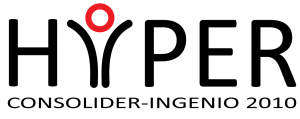 |
HYPER Hybrid Neuroprosthetic and Neurorobotic Devices for Functional Compensation and Rehabilitation of Motor Disorders Dates: From 2009-12-17 to 2015-12-16 The HYPER Project intends to represent a breakthrough in the research of neurorobotic (NR) and motor neuroprosthetic (MNP) devices in close cooperation with the human body, both for rehabilitation and functional compensation of motor disorders in activities of daily living. The project will focus its activities on new wearable NR-MNP systems that will combine biological and artificial structures in order to overcome the major limitations of current rehabilitation solutions for the particular case of Cerebrovascular Accident (CVA), Cerebral Palsy (CP) and Spinal Cord Injury (SCI). Funded by CONSOLIDER-INGENIO – Spanish Research, Development and Innovation Ministry. |
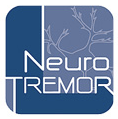 |
NeuroTREMOR A novel concept for support to diagnosis and remote management of tremor Dates: From 2012-02-01 to 2015-01-31 Tremor is the most common movement disorder and is strongly increasing in incidence and prevalence with ageing. The most frequent types of tremor are those arising from two neurodegenerative disorders: Parkinson’s disease and essential tremor. Tremor is not effectively managed in 25% of patients and is one of the most commonly misdiagnosed neurologic disorders. The main objective of the project is to validate technically, functionally and clinically, a novel system for understanding, giving support to diagnosis, and remotely managing tremors. Funded by the European Commission under Grant Agreement: FP7-ICT-2011.5.1-287739 |
| HYBRID Hybrid Technological Platform for Rehabilitation, Functional Compensation and Training of Gait of Gait in Spinal Cord Injury (SCI) Patients Dates: From 2012-01-01 to 2014-12-31 The objective of the HYBRID project is to develop an improved ER-MNP system for functional motor restoration of gait in SCI paraplegic patients, supported by a functional smart walker as a way to improve safety, usability, energy storage, weight acceptance and adaptability in a real ambulatory scenario. Funded by the Spanish Research, Development and Innovation Ministry. |
 |
BETTER Brain-Neural Computer Interaction for Evaluation and Testing of Physical Therapies in Stroke Rehabilitation of Gait Disorders Dates: From 2010-02-01 to 2013-01-31 The principal goal of BETTER is to improve physical rehabilitation therapies of gait disorders in stroke patients based on BNCI assistive technologies, producing improved systems, providing guidelines for improving future systems, and developing benchmarking and evaluation tools. Funded by the European Commission under Grant Agreement: FP7-ICT-2009-7.2-247935 |
 |
BETTER-EEU Brain-Neural Computer Interaction for Evaluation and Testing of Physical Therapies in Stroke Rehabilitation of Gait Disorders- Enlarged European Union Dates: From 2011-07-01 to 2013-01-31 Funded by the European Commission under Grant Agreement: FP7-ICT-287592 |
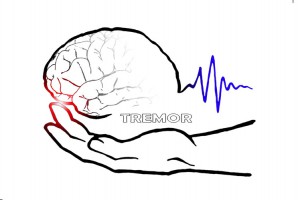 |
TREMOR An ambulatory BCI-driven tremor suppression system based on functional electrical stimulation Dates: From 2008-09-01 to 2011-08-31 The main objective of the project is to validate, technically, functionally and clinically, the concept of mechanically suppressing tremor through selective Functional Electrical Stimulation (FES) based on a (Brain-to-Computer Interaction) BCI-driven detection of involuntary (tremor) motor activity. Funded by the European Commission under Grant Agreement: ICT-2007.7.2-224051 |
 |
TREMOR-EEU An ambulatory BCI-driven tremor suppression system based on functional electrical stimulation – Enlarged European Union Dates: From 2010-05-01 to 2011-08-31 Funded by the European Commission under Grant Agreement: ICT-2007-258083 |
 |
REHABOT Sistemas avanzados EEF y UMI para el desarrollo de soft-robots en el Ámbito de la robótica de rehabilitación Dates: From 2008-11-01 to 2011-08-31 Funded by the Spanish Ministry of Science and Innovation (DPI2008-06772-C03-01) |
 |
ESBIRRO Enhanced Sensory Bipedal Rehabilitation Robot Dates: From 2006-11-01 to 2009-10-30 The goal of this project is to develop Limit Cycle control and biomimetic recovery reactions for the control of walking, in order to apply these paradigms to design and construct an autonomous walking biped and to improve a robotic exoskeleton for gait. Funded by UE FP6-2005-IST-61-045301-STP |
| GAIT Intelligent knee and ankle orthosis for biomechanical evaluation and functional compensation of joint disorders Dates: From 2002-09-01 to 2006-02-28 The aim of the project is to provide an integrated approach to active orthotic functional compensation and biomechanical evaluation of knee and ankle joint disorders. Funded by UE IST IST-2001-37751 (5PM) |
| DRIFTS Dynamically Responsive Intervention for Tremor Suppression Dates: From 2002-04-01 to 2005-03-31 The DRIFTS Project Aims to Create Wearable Active Orthoses That Suppress Upper-Limb Tremor While Allowing Natural Movement. Funded by EU Quality of Life QLRT-2001-00536 (5PM) |
